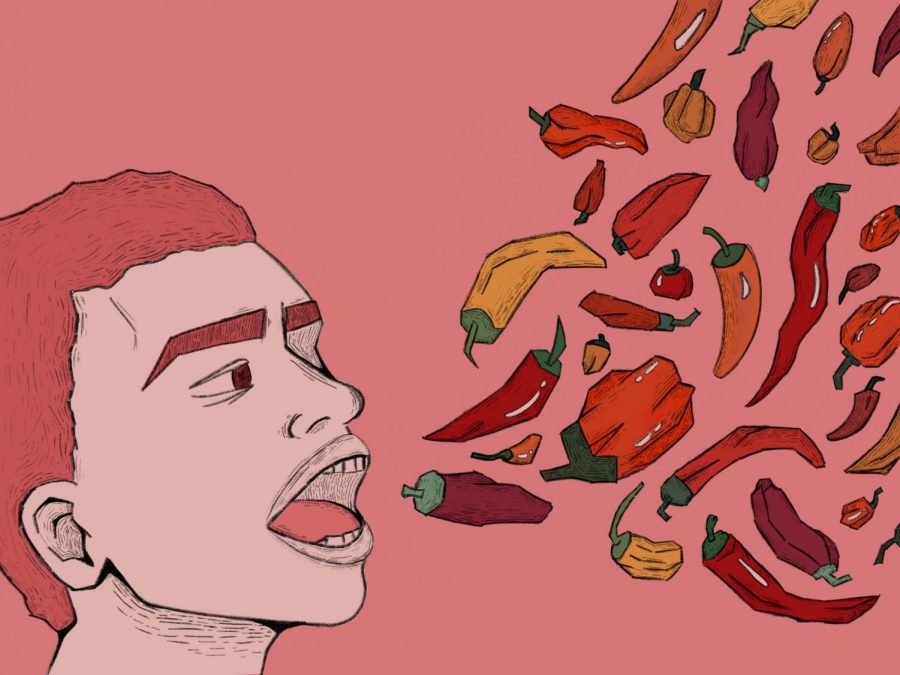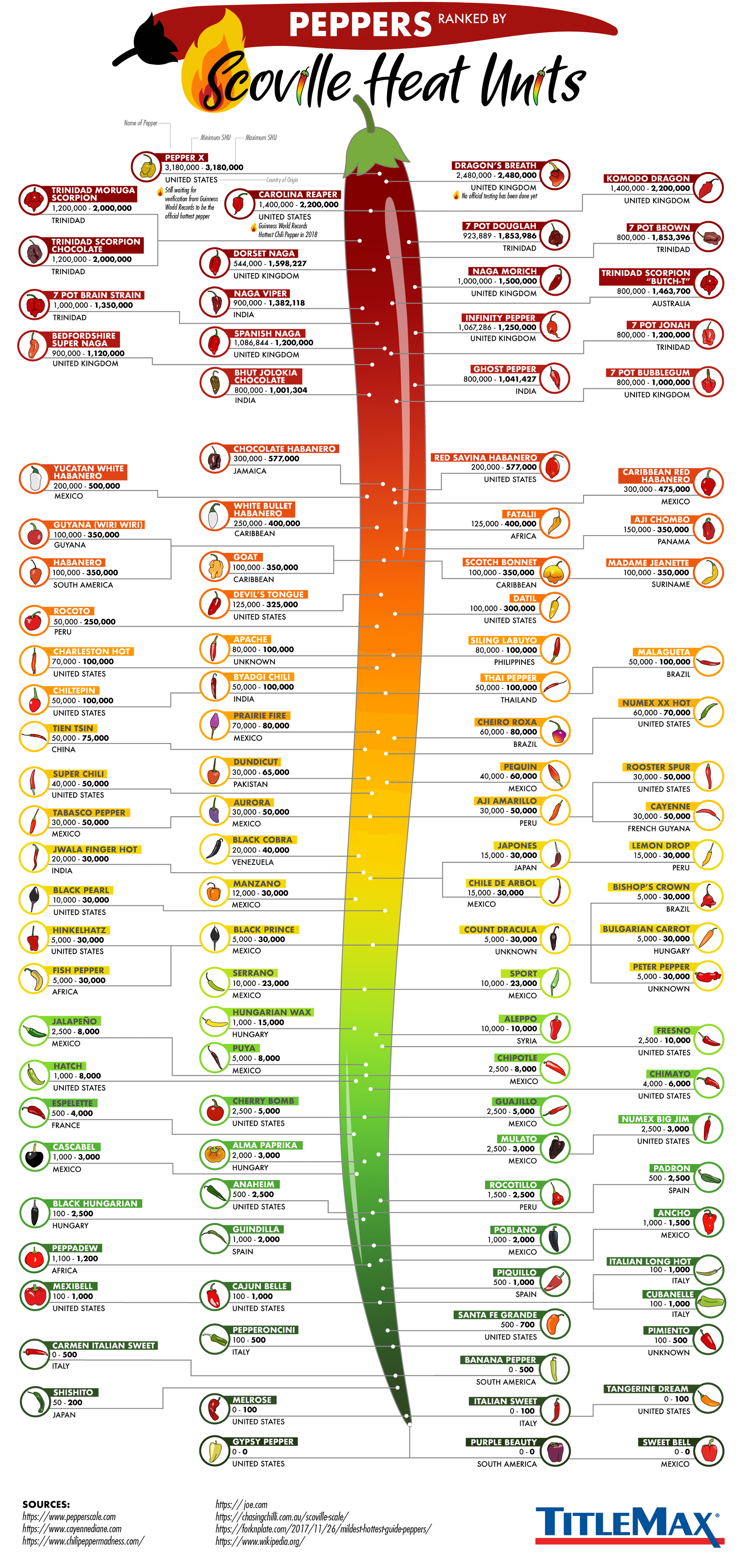A rush of adrenaline. A sense of accomplishment. A lowered risk of premature death. And on top of that, an extra dimension to a dish. What can possibly have all of these effects?
The answer is spicy foods.
Where to find spicy cuisine
Spice is not very prominent in American cuisine, but it’s a defining feature for many other countries. Countries like China, Mexico, Thailand, India, and Ethiopia are known for their spicy foods. If these countries are highlighted on a map, one thing becomes apparent: most are near the equator and have hot and tropical climates. In fact, countries further away from the equator, such as Denmark and Russia, tend to lack spicy foods.
If you focus on a specific cuisine, this phenomenon becomes even more apparent. Generally speaking, Indian cuisine is associated with spicy dishes. The state of Andhra Pradesh, located in southern India, is known for its use of chili powder and is considered one of the country’s spiciest states. However, not all Indian foods are as spicy; the northern areas, which are further away from the equator, have sweeter foods. One example is butter chicken, a popular, mildly sweet, and spicy tomato butter cream-based curry that originated in Delhi in northern India.
Sophomore Talon Negandhi has family members who live in Western India. There, the food is distinctly different from both the Northern and the Southern foods but shares some traits from both areas.
“My family is from the city of Ahmedabad, in the state of Gujarat. Gujarat is found in western India. In general, the food in this area is very spicy but also sweet,” Negandhi said.
The variation in spiciness within a country can also be seen in America. Down in New Orleans, Cajun dishes like gumbo and jambalaya are considerably spicier than the classic hamburger and fries.
This begs the question: why are spicy foods near the equator?
Why spicy foods are prevalent in hot places
There are many theories for why most spicy foods originated near the equator. One claims that spicy foods make people sweat and help them cool off quicker. However, according to Science Meets Food, this way of cooling down is too metabolically expensive and therefore illogical.
Another theory reasons that spicy foods can kill microbes and cover the flavor of foods that are more likely to spoil in the hot and humid climates near the equator. While there are many different types of spicy ingredients, including garlic, wasabi, and black peppers, chili peppers are the most prevalent. Chili peppers have a chemical compound called capsaicin, which causes a burning sensation in one’s mouth. Enough capsaicin can act as an antibacterial agent and prolong foods from spoiling. A study conducted by Cornell University concluded that capsaicin in chili peppers could eliminate up to 75% of food-borne bacteria.
A more sociological explanation for spicy cuisine is culture. Originally native to Central America, chili peppers were believed to be part of the human diet as early as 2,500 B.C., according to the University of Minnesota. There, they remained popular, but when Europe got their hands on chili peppers in the 15th and 16th centuries, they didn’t catch on. At the time, European cuisine emphasized balance and pairing similar flavors; chefs strove to extract the purest essence of basic ingredients. Thus, chili peppers were excluded. However, they did become popular in China, Africa, and Southeast Asia. Now, there are an estimated 50,000 different types of chili peppers around the world that people have developed across the generations.
Even in modern times, culture decides the spiciness of the food. Most restaurants cater to the locals’ tastes and often drastically change the level of spiciness in the dishes they serve. For example, Chicken Tikka Masala, a staple for Indian restaurants in America, was actually developed in England to satisfy customers who preferred a sweeter and mellower taste.
“Food in India is way spicier than the food in Indian restaurants in America,” Negandhi said. “Northern Indian food is the most popular type in restaurants in the United States.”
The health benefits
Eating spicy foods has added benefits to health as well. According to the National Library of Medicine, chili peppers are a proven fat-burning mechanism and can help promote weight loss. Capsaicin can increase one’s metabolism as well; during exercise, more energy will be used and more calories will be burned, leading to a healthier body.
According to Penn Medicine, eating red chili peppers can also decrease one’s risk of dying from a stroke or heart disease by 13%. Furthermore, in a study conducted by the Chinese Academy of Medical Sciences, a person who ate spicy foods six to seven times a week had a 14% lower risk of premature death than those who ate spicy foods less than once a week. The study also found that spicy food decreased the risk of death from cancer and heart and respiratory diseases.
Of course, one must be careful with how much spicy food they eat. Overconsumption could cause stomach aches and vomiting or even trigger upper gastrointestinal symptoms or irritable bowel syndrome (IBS). According to Chicago Medicine, people who ate spicy foods ten times a week or more were 92% more likely to have IBS than those who did not eat spicy foods. However, in moderate amounts, spicy food ultimately improves one’s health and helps them live longer.
Getting a higher spice tolerance
As previously mentioned, capsaicin activates specific receptors on the tongue and sends the spicy sensation to the brain. These receptors are the same receptors that activate when someone sips a burning hot soup; when a chili pepper is eaten, the brain actually thinks the tongue is burning.
So why do people willingly go through that pain and enjoy the sensation?
According to Business Insider, the brain releases adrenaline and dopamine in response to the burning sensation. This is similar to what happens during a runner’s high, when a person can feel euphoria after a long training session. After eating something spicy, people can often feel a small amount of accomplishment, which makes them continue to eat spicy foods.
Of course, liking spicy foods is an opinion, so reasons for it vary. Someone who grew up with spicy foods will have a different view than a person who did not. A big reason behind liking spiciness is, again, culture and the environment in which one grew up.
“Spiciness in my food provides flavor, and it tastes better. Spiciness is a culture, so food in India promotes eating spicier foods. I think many people in India are very used to spiciness and don’t consider foods to be ‘spicy.’ It is part of tradition and culture to eat these common foods in India,” Negandhi said.
Most Americans do not eat spicy foods on a regular basis. However, in the Bay Area, there are restaurants of various different cuisines that people have access to. They may love it or hate it, but everyone has their own hot takes about spicy foods.
“I like spicy foods because they add variety to otherwise bland foods. Spiciness gives a unique flavor to foods, especially since spicy foods are uncommon in American cuisine,” said John Taylor, a junior.
However, it is hard to start eating spicy foods for one big reason: tolerance. The smallest drop of hot sauce can be unbearable to people who don’t eat spicy foods. But a spice tolerance is something that can be trained.
Working up a tolerance is a slow process and requires patience; it takes one baby step at a time. Someone who wants to build up their tolerance goes from eating mild chilies to hotter peppers, like jalapeños. If one is really up to the challenge, they can work their way up the Scoville scale, the universal spiciness scale.
“I think that over the years, my tolerance has gone up. Simply eating different foods from different cultures and being exposed to the entire spectrum of heat has increased my tolerance,” Taylor said.
Studies have shown that building up a spice tolerance does not make the pain lessen or go away, according to TED; people with a high spice tolerance rate the pain just as high as those with a lower tolerance. This means the more one builds up their tolerance, and the more they eat spicy food, the tougher and healthier they can become.
























